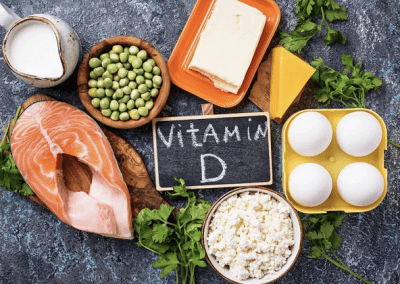According to the National Institutes of Health, 795,000 strokes occur every year in the United States. And the risk factor for having a stroke doubles every 10 years after age 55. To help reduce your risk of stroke, this blog post will show you how to identify a stroke and offer stroke prevention tips.
Act F-A-S-T
During the early phases of a stroke, many people discount their symptoms or think they’re only temporary. But the earlier you can have a stroke diagnosed and treated, the better your recovery will be. That’s why the National Stroke Association created an acronym to help you think F.A.S.T.:
- Face Drooping: Does one side of the face droop or is it numb? Ask the person to smile. Is the person’s smile uneven?
- Arm Weakness: Is one arm weak or numb? Ask the person to raise both arms. Does one arm drift downward?
- Speech Difficulty: Is speech slurred?
- Time to call 911
There are other signs of a stroke. Be on the lookout for sudden:
- Numbness or weakness of face, arm, or leg, especially on one side of the body
- Confusion, trouble speaking or understanding speech
- Trouble seeing in one or both eyes
- Trouble walking, dizziness, loss of balance or coordination
- Severe headache with no known cause
8 Stroke Prevention Tips
While early stroke detection is good, it’s better to never have a stroke at all. Below are some guidelines to help you reduce your risk.
- Lower your blood pressure
High blood pressure is the number one cause of strokes and can make you 4 to 6 times more likely to have one. Your high blood pressure can thicken the artery walls and make cholesterol or other fats build up and form plaque. If plaque breaks free, it can block your brain’s blood supply. High blood pressure also can weaken arteries and make them more likely to burst, which would cause a hemorrhagic stroke.
- Eat well
A healthy diet can lower your risk of a stroke and help you shed weight if you need to. Try to eat 4 to 5 cups of fresh fruits and veggies every day. Choose lean proteins and high-fiber foods. Stay away from trans and saturated fats, which can clog your arteries. Cut salt, and avoid processed foods. They’re often loaded with salt, which can raise your blood pressure and trans fats.
- Be active
Along with a healthy diet, regular exercise is the best way to maintain a healthy weight.
It can also help lower your cholesterol and keep your blood pressure healthy. For most people, at least 2.5 hours of moderate-intensity aerobic activity — like cycling or fast walking — every week is recommended.
- Stop smoking
Along with a healthy diet and regular exercise, smoking cessation is one of the most powerful lifestyle changes that will help you reduce your stroke risk significantly. Smoking narrows your arteries and makes your blood more likely to clot. Nicotine in cigarettes raises blood pressure, and carbon monoxide in smoke lowers the amount of oxygen your blood can carry. Even breathing secondhand smoke can raise your chances of a stroke.
- Drink only in moderation
Excessive alcohol consumption can raise your blood pressure and triglycerides, and trigger an irregular heartbeat (atrial fibrillation). Limit yourself to no more than 2 drinks a day if you’re a man and 1 drink if you’re a woman. A standard-sized drink is a 5-ounce glass of wine, 12-ounce beer, or 1.5-ounce glass of hard liquor.
- Watch your cholesterol
High cholesterol can lead to clogged arteries, which can cause a heart attack or stroke.
If diet and exercise aren’t enough to keep your cholesterol in check, your doctor may recommend medication. These are healthy ranges for cholesterol:
Total cholesterol: under 200 mg/dL of blood
LDL (bad) cholesterol: under 100 mg/dL
HDL (good) cholesterol: above 60 mg/dL
- Control your diabetes
High blood sugar can make you 2 to 4 times more likely to have a stroke. If it’s not managed well, diabetes can lead to fatty deposits or clots inside your blood vessels.
This can narrow the ones in your brain and neck,and might cut off the blood supply to the brain.
- Watch your rhythm
One cause of strokes is an irregular heartbeat, called atrial fibrillation (AFib). AFib can make the blood pool in your heart, where it can clot. If that clot travels to your brain, it can cause a stroke. It can be caused by high blood pressure, plaque in your arteries, and heart failure.
Live Your Best Life
At Sedgebrook, every aspect of your health and wellness is important to us. That’s why we have programs to help you be your best. To learn more about everything we have to offer, contact us here.



